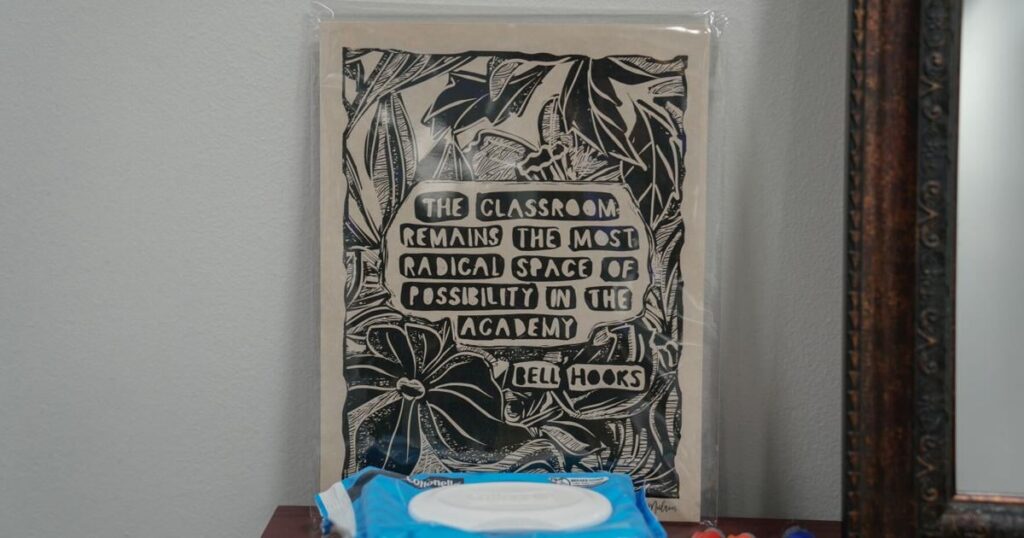
Research suggests that the current teacher shortage began in early 2018 and has been prolonged by the pandemic, curriculum politicization and a breakdown in school culture.
The shortage in teachers that has blighted K-12 education for over half a decade continues to persist, with a recent study by the Economic Policy Institute suggesting that the coronavirus pandemic exacerbated the deficit. Currently, there are around 49,000 vacant teaching positions in the United States, according to one ongoing analysis.
In a profession that is strained by continuously decreasing pay and the lingering effects of the pandemic, some studies suggest that an inadequate working environment has caused many teachers to leave their positions.
“The issue with teachers leaving is the result of workplace conditions and how teachers are treated in the workplace,” said Christopher J. Cormier, Ph.D., professor of teaching and learning in the School of Education. “It seems quite obvious why teachers of color leave [schools] at much higher rates than white teachers — they’re often expected to take on additional tasks and responsibilities without any additional pay.”
A study by the Learning Policy Institute highlighted the reality that the turnover rate for teachers of color is higher than that of white teachers, with teachers of color having a turnover rate of 18.9% while white teachers sit at 15%. Emphasizing the disproportionate impact of this trend on students of color, the same study found that students were more likely to earn better grades and graduate after coming into contact with an educator who shares their identity.
“Students of color who have teachers who match their racial and/or gender background tend to do much better academically and are more likely to go into post-secondary education, whatever that may be,” said Cormier. “When you don’t have those teachers, the students feel the impact.”
However, Cormier warned against viewing teachers of color solely as means to work with students of color. “The reality is that the responsibility of educating students … is not the responsibility of just those who look like them,” said Cormier.
He emphasized that schools of education can do more to foster this concept by introducing dialogue on race throughout the entirety of the curriculum, rather than just in certain courses.
“I don’t know of any [education] school in the nation that … specifically focuses on working with people from different backgrounds,” said Cormier. “Schools … generally have one class … on race and working with diverse families. I feel it’s much more effective if you had that type of curriculum embedded throughout all of the classes.”

Estela Zarate, Ph.D, Dean of the LMU School of Education, recommended that credentialing programs and local education departments promote the development of teacher residency programs, which tend to graduate educators who stay in the profession longer.
In a piece for the Association of Jesuit Colleges and Universities (AJCU), Estela Zarate, Ph.D, dean of the School of Education, echoed Cormier’s comments about the disproportionate effect of the teacher shortage on marginalized students.
Turning to the future of the education job market, she suggested that teacher residency programs offer schools their best shot at obtaining and retaining teachers.
“Research has consistently found that teachers prepared in teacher residency programs tend to stay longer in the profession compared to other preparation programs, with students who perform better academically,” wrote Zarate for AJCU. “The catch is that teacher residency programs are costly.”
A study from The Brookings Institution found that while teacher residency programs necessitate a sizable initial payment from school districts, this cost is eventually recovered because residency-trained teachers remain at schools for longer, negating any cost of turnover.
According to the California Commission on Teacher Credentialing, the residency model incorporates both post-baccalaureate education and hands-on experience working with students alongside a seasoned teacher for nearly the entirety of the program. The Learning Policy Institute contrasted the residency model, which contains 36 weeks of student instruction, with other models that only contain between 12 and 15 weeks of in-classroom experience.
“The more support [teachers] receive at the start of their profession, the more successful they will be and the more likely they will stay in their profession,” said Zarate in an interview with the Loyolan.
Although the field of education is still struggling to emerge from a dry spell, students and faculty in the School of Education are projecting optimism. Zarate noted that enrollment numbers experienced a downturn during the pandemic but have since rebounded to normal levels.
“Everyone is very hopeful about the way that we keep learning and professionalizing the vocation of teaching,” said Zarate. “I think everyone recognizes that the way that schools and teaching look today is very different [from] what [they] looked like 40 years ago.”

